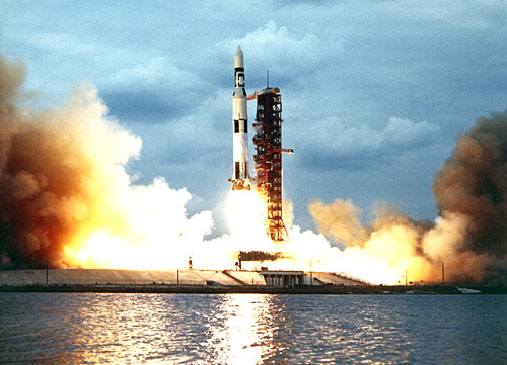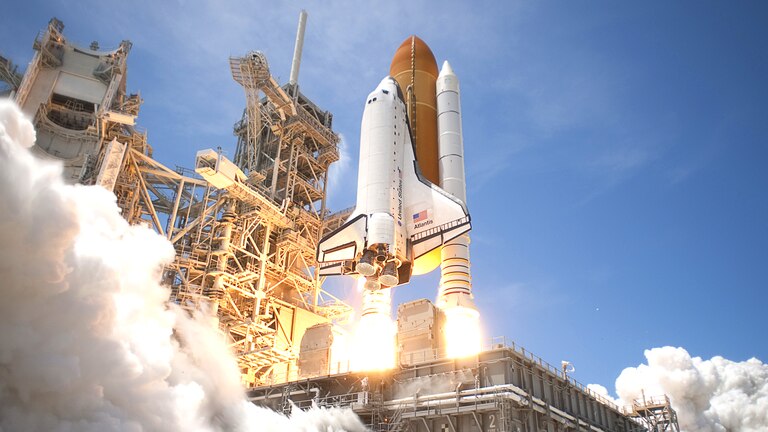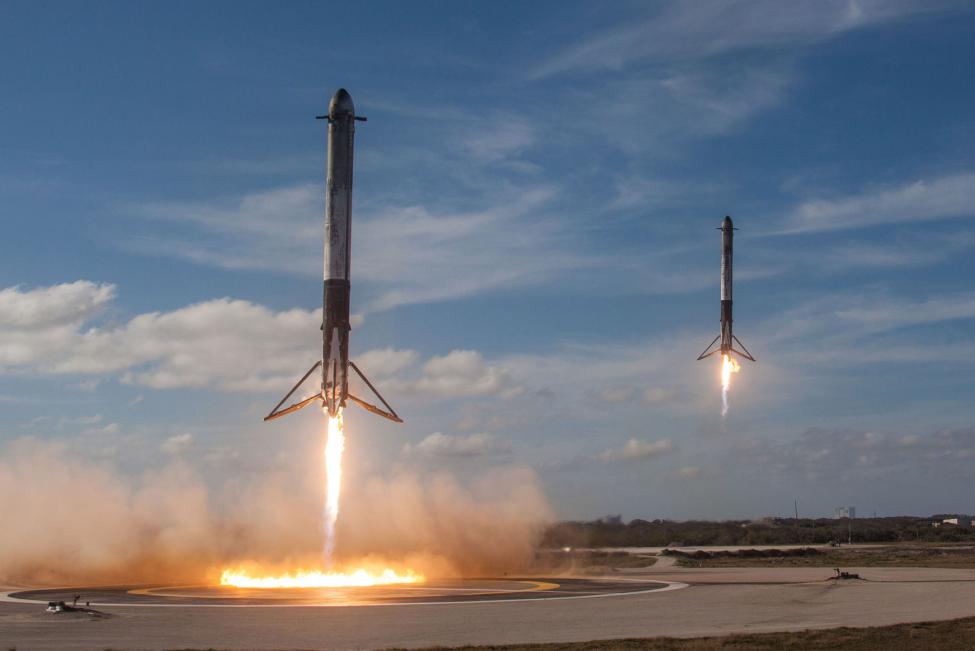This year marks the 50th anniversary of humans becoming an extraterrestrial species. In July 1969, men set foot on lunar soil, making the first tangible step in connecting mankind with deep space and fueling aspirations for what humans could achieve when it came to interplanetary travel. Indeed, lofty goals have been made in this regard since the Apollo missions – some as ambitious as starting the first Martian colony as soon as 2025. But exactly how much progress have we made in launch systems since landing on the moon, and is it sufficient to achieve such a feat as colonizing Mars?
In order to travel to and colonize other planets, mankind would need to develop a way to send mass amounts of cargo reliably and consistently to the moon, as the moon would likely serve as a pit stop for subsequent legs of any given cosmic journey. This would require repeated use of rockets that are powerful enough to simultaneously lift heavy payloads and impart them with enough speed to clear Earth’s atmosphere – ideally rockets that are both extremely powerful and reusable. The Apollo program was supported by NASA’s Saturn V rocket which is the most powerful rocket brought to operational status to date. While these rockets provided the power necessary to carry men and their cargo to the moon, every part of the rocket itself was consumed in a mission; none of the engines, boosters, or fuel tanks survived for reuse. Additionally, these rockets were built during a time of political urgency; NASA’s budget peaked at 4% of all federal spending during the Cold War, compared to the 0.5% it operates at now. So, while Saturn V was an extremely powerful rocket, its disposable nature would not be economically sustainable for present day Martian colonization efforts.

Liftoff of Apollo 11.
Since Saturn V, scientists have worked to improve both the payload and reusability of rockets. From 1981 to 2011, NASA operated the space shuttle, a partially reusable spacecraft system that included two recoverable rocket boosters flanking an external fuel tank and three clustered liquid-fuel cryogenic rocket engines in the spaceplane itself. The rocket boosters were jettisoned just before reaching orbit and parachuted down for landing and recovery in the ocean; the rocket engines could be recovered from the spaceplane itself after it returned from a mission. Since the space shuttle era, companies have also hopped on the rocket development bandwagon; SpaceX, for example, is working on making their multistage Falcon rockets 100% reusable. Thus far, they can reliably achieve targeted landing of the first stage of its rockets and reuse these recovered boosters in subsequent flights. Complete rocket reuse would dramatically reduce the cost of colonizing Mars, making it much more feasible.

In addition to making headway in rocket reusability, efforts have also been made to increase rocket power. NASA is now building the Space Launch System (SLS), a rocket family that is projected to be the most powerful in existence, with one variant carrying 143 tons of pure payload to low Earth orbit (surpassing Saturn V’s 130 ton payload). Pragmatically, the build of the first SLS variant borrows rocket engines from the space shuttle, a proven technology. Progress on this program however is uncertain, as the US 2020 fiscal year budget did not allot any money for SLS development. In private efforts, just earlier this year SpaceX successfully launched its Falcon Heavy rocket – the highest payload launch vehicle in current operation – and additionally recovered all three of its boosters on Earth.

Since landing on the moon, we’ve made a lot of progress in making rockets both more powerful and reusable – two key ingredients in the recipe for colonizing a planet like Mars. But the question remains, how close are we to reaching the red planet? Nothing is certain, but mankind is making great strides in getting our rockets up to par for these unprecedented flights, and I personally feel confident that we’ll see “Man on Mars” rocking our headlines within the next couple decades. Now, is there a future where humans terraform Mars, or where Earthly humans can pop over to visit their Martian relatives? To that I’d say, ask me again in another 50 years.
Peer Edited by Aldo Jordan